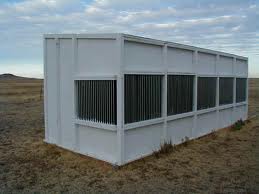
Falconry Gear Guide - Secrets of Falconry Revealed!
by Zack Eron
Copyright 2011 Zack Eron
Smashwords Edition
Smashwords Edition, License Notes
This ebook is licensed for your personal enjoyment only. This ebook may not be re-sold or given away to other people. If you would like to share this book with another person, please purchase an additional copy for each recipient. If you’re reading this book and did not purchase it, or it was not purchased for your use only, then please return to Smashwords.com and purchase your own copy. Thank you for respecting the hard work of this author.
Falconry Equipment Buyers Guide
Falconry is the art and sport of hunting with raptors. It has been practiced in many forms for thousands of years by many cultures. It is the oldest field sport known to mankind. Falconry takes a lot of dedication, patience and time spent with your bird almost everyday. It also requires special equipment and other necessary items to ensure safe and effective training of your bird. FalconStuff.com has a selection of some of the basic and essential equipment needed in falconry which are further explained below.
Mews

A falconry bird is usually housed in a mews. This is typically at least an 8 by 8 feet-sized area with perches, a bath, and other necessities for the bird. Mews can be a simple single chamber. It can also have an equipment room attached and a weathering yard where the bird is placed in to sun and spend her days.
Hood
Probably the most important piece of equipment. This is used in acclimatizing the birds to humans and the human world. It also helps to keep the raptor in a calm state, both in the early part of its training and throughout its falconry career. Hoods are made from several different patterns, each designed for a particular species
Arab or Bahraini - marked by the circular pattern to make the hood fit the contours of the eyes and head. The braces are woven in and out of leather pleats making an accordion of the back's base which tends not to catch the bird's crest feathers.
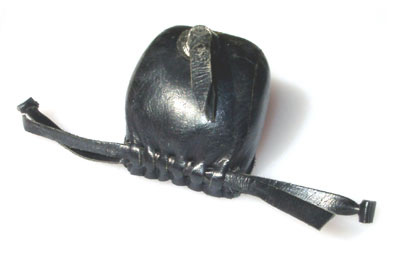
Dutch - traditionally made from three pieces of leather, but ise recently being made from a single piece as well. It has an inverted V opening in the back where the braces close. Although the Dutch hood style was used exclusively on falcons, a good, well-made Dutch hood will properly fit a hawk, falcon, or accipiter of the right size.
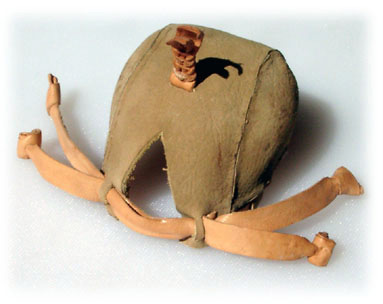
Indian, Pakistan, or Amritsari - this hood style is from Pakistan and is sometimes also known as the Indian hood outside the Indian subcontinent. This style is marked by a straight line where the leather meets that makes the contours of the hood. Generally thought to best fit Accipiters, eagles, and Ferruginous hawks, many falconers dislike this hood style and prefer the Dutch hood for all their various species.
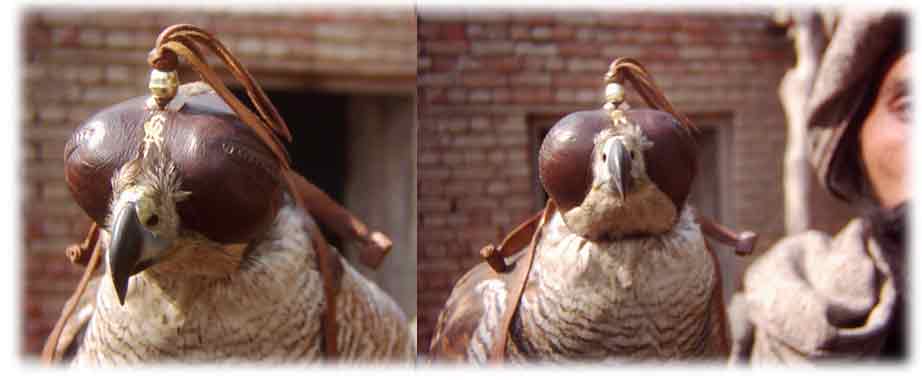
British "Game Hawkers" Hood - the plume for this style of hood would be made from the first type of game caught with the falcon. When falcons were carried on the cadge one could quickly see the required falcon by the color of the eye panels and the type of feathers in its plume. Green felt eye panels would be used for a Crow hawk.
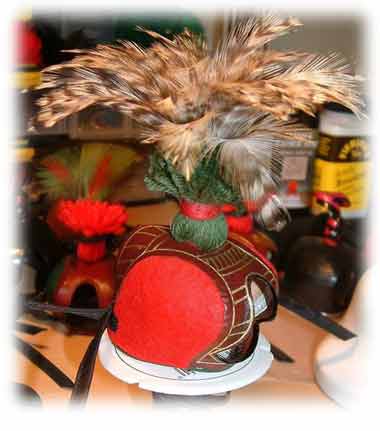
Kazakh - This hood originated in Mongolia and is used by the Kazakh falconers most typically on Golden Eagles. The tab at the top or back of this hood serves the same function as the more familiar top knot.
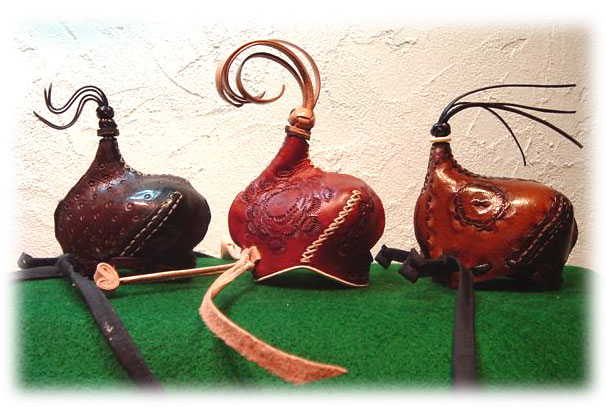
Bells are a great help in locating a falcon or hawk out of sight. This is usually attached on its legs via small leather strips called bewits.
Bewit
Small strips of leather which attach the bells or other hardware to the bird's leg. If a different material is used as a bewit, it should not be attached directly to the leg, but rather to the anklet.
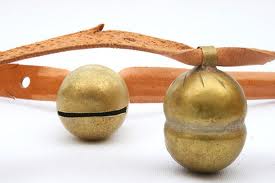
Anklets
The leather strap which goes around the bird's leg. The jesses are attached to this. Sometimes also called a bracelet.
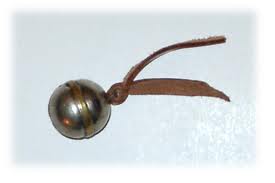
Identity Band
Although not required, this equipment is used by most in many countries. A small ID tag on your bird with your name and phone number can identify your bird and makes it possible for others to return it when lost.
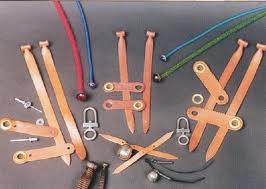
Jesses and anklets
These are strips of strong leather, nowadays often kangaroo, on both legs. These are used for holding the bird and are connected to the leash through the swivel. Jesses and anklets need to be replaced periodically, and checked for fit if they are causing injury. Keep the jesses supple with proper dubbin or similar grease.
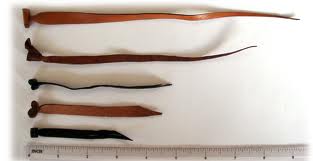
Jesses are of 2 types:
Traditional - a single strap specially knotted onto the bird
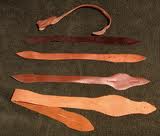
Aylmeri - a two part restraint featuring an anklet that is grommeted on, and a removable jess strap. Nylon Aylmeri jesses, which are thinner, lighter, and stronger, have recently grown in popularity. They do not rot or need oiling to stay supple
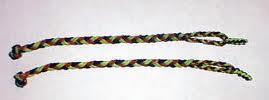
Leashes
Similar to a dogs leash, this is what falconers hold on to. Nowadays it's also usually made of nylon. Although leather is traditional, materials such as nylon and parachute cord are stronger and do not break down like leather.
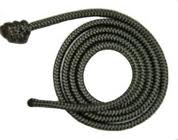
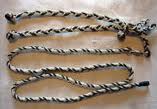
Swivel
It links the leash and jesses. The two eyes rotate independent of each other. The bird, in this way, avoids getting leash and jesses entangled.
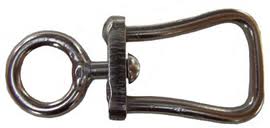

Perches
Having a variety of perching surfaces in a variety of diameters will help keep your bird's feet in good shape.
Block Perch - can be incredible works of art made of marble, cast of plaster, turned from wood, or they can be very simple. As long as it is safe and comfortable, it will serve its purpose.
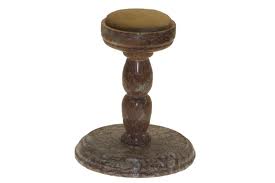
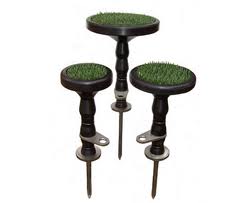
Bow Perch - a bow of metal or wood with a perching surface where the bird will stand. These can be made in all different sizes. These perches are typically wrapped with rope.
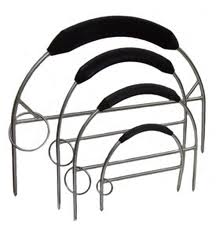
Ring Perch - also called a Rotating Ring Perch, these are sometimes maligned as having too many moving parts. They are compact and stable as they have a single spike that typically goes into the ground.
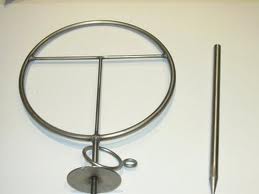
Screen Perch - These are excellent perches in the right hands, and disasters if used incorrectly. One of the biggest advantages of this design is that it can be placed up off the ground when birds naturally want to get up high and hide in the evening.
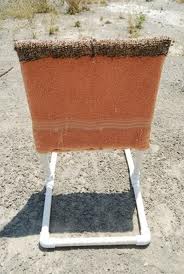
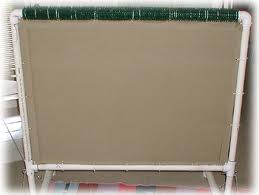
T Perch - is a tall perch putting the bird at eye or shoulder height. This particular perch is about 5' tall and is used for remote control jump-ups or general inspection or talon care. It is unsafe for a leashed bird as the leash can get can get caught on one of the T pieces
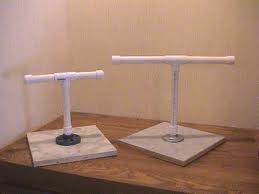
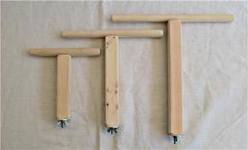
Shelf Perch - just as the name indicates, this is a shelf coming out from a wall. Typically wrapped in sisal or covered in Astroturf, the bird can choose where to stand on this perch.
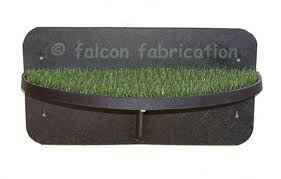
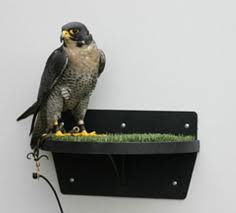
Presley Perch - named for Floyd Presley, this is sometimes called a high perch or tall perch. This is basically a rotating ring perch elevated up in the air, anywhere from 5 feet high to 20 feet high appropriately scaled for the bird it is being used with.
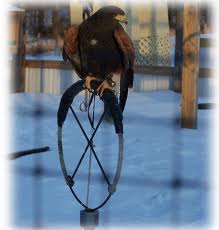
Bath
Some individual hawks and falcons will not perform well without their daily bath. The bath should ideally be about half the wingspan in diameter, but less will do. The water should be changed every or every second day, depending on the climate. The bath should also be disinfected regularly.
Scale
A weighing scale is used to weigh the bird and its food. Weight is key, especially in small species. The scale must be reliable and accurate. There are two types that are mostly used, digital scales and triple beam scales. Be sure the scales weigh at least 5 pounds.
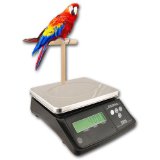
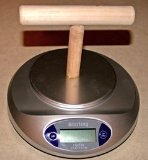
Gauntlets or gloves
These are used by the falconer to turn the arm into a suitable perching surface. Falconry gloves may only cover the fist and wrist, while gauntlets for larger species extend to the elbow. An eagle glove may cover the entire arm and a portion of the chest, or it may be a heavy sheath worn over a standard hawking glove. The traditional falconers glove is made of buckskin, but can also be made of moose or other strong leather.

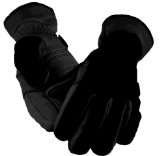
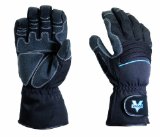
Creance
A long line or cord attached to the bird while training. This is tied to the swivel or jesses. Ten yards is going to work for most situations, but for free flights to verify that your bird is ready to be taken from the creance, many recommend 50 yards in length.
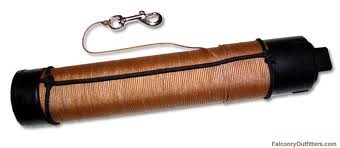
Telemetry Transmitter
A radio transmitter fitted to the bird, useful in tracking it when not in sight or does not return from flight. The transmitter emits a radio Beep, which the falconer can track with a portable receiver.
Raptors are birds of prey and eat a strictly carnivorous diet. Some falconers raise pigeons, chickens, quail, or rabbits for the food. Others store the bird's catches for food and supplement by purchasing frozen foods. The birds must be fed a good quality, varied diet along with a vitamin and mineral supplement. In all cases, a bird's diet is carefully measured to control its weight.
Falconers also have to be aware of potential health problems specific to the type of bird they are caring for, and how health problems can be prevented. Significant progress and new development of diseases and treatment methods have been made in the past years. Special medications for birds effective in treating specific illnesses are now available.
Some common medicines that a falconer must have handy:
Antacid preparation (TUMS)
Benadryl Allergy
Pepto-Bismol
Topicals:
Aloe Vera
Antiseptic towelettes or wash
Artificial tears
Band-aids
Cornstarch
Neosporin Ointment
Rubbing alcohol and alcohol swabs
Tissue glue
KY Jelly
For beginners, initial knowledge of the sport is key to a good start in falconry. The beginner must learn about the various gaming birds, their stages of life, characteristics, prey, care, feeding and suitability for the falconer and the hunting environment. FalconStuff.com offers a selection of books which provide useful information about falconry.
The Falconer's Apprentice by William C. Oakes
Falconry & Hawking by Phillip Glasier
Falcon Fever: A Falconer in the Twenty-first Century by Tim Gallagher
Practical Handbook of Falcon Husbandry and Medicine by Margit Gabriele Muller
Art of Falconry; Being the De Arte Venandi cum Avibus of Frederick II of Hohenstaufen by Frederick Second of Hohenstaufen
Falconry: The Essential Guide by Steve Wright
Falconry: Art And Practice, Revised Edition by Emma Ford
Training Birds of Prey by Jemima Parry-Jones
Falconry For Beginners by Harris
Falconry Manual by Frank Beebe
As an apprentice falconer in the United States, you only have the options of a Red-Tailed Hawk or an American Kestrel for a bird, unless state laws state otherwise. The easiest way to start your venture into falconry is to contact a local club and ask for help and information regarding the sport. This will give you a good idea about what is required to be a falconer, and whether or not you want to pursue it further. We hope that these information serve you well in your endeavor to becoming an expert falconer.
###
About the author:
Zack Eron, store owner of FalconStuff.com, had first developed an avid interest in birds when he was still 7 years old. His mother was a member of a local bird-watching club and used to take Zack with her regularly during their club's field trips. Zack enjoyed the activities of the group and was soon spotting and identifying birds right along with his mom and the other club members. Zack continued bird watching with the club throughout his school years and eventually became a member. Graduating with a degree in education, Zack was able to get a job teaching General Science and Biology to elementary students in his school. In 2001, with a little help from his fellow birdwatchers, Zack started FalconStuff.com. The store aims to cater to the different needs of all kinds of bird-lovers everywhere. Since then, birdwatchers, falconers, and bird pet-owners alike have depended on FalconStuff.com's services when it comes to taking care of their feathered friends.